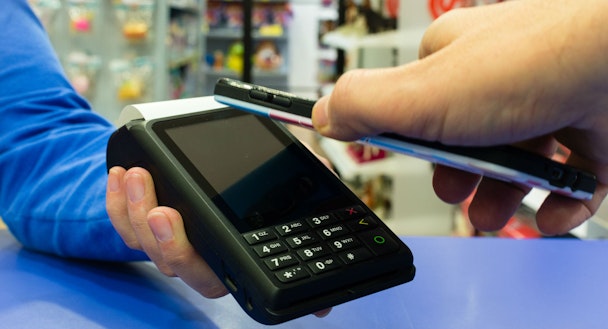How brands benefit if the US catches up to China’s cashless society
Despite its leadership in seemingly all things digital advertising, the United States lags well behind many nations when it comes to mobile technology adoption. Perhaps nowhere is this lag as pronounced as it is when it comes to US mobile payment adoption compared to China. That’s a problem for US brands and merchants, who are currently missing out on the benefits that these methods of payments can afford, including a more seamless user experience, deeper consumer insights and — importantly — new revenue opportunities.

For consumers in China today, the mobile wallet is typically their primary — or only — wallet. The undisputed leader in mobile payments, China accounts for more than 60 percent of all mobile point-of-sale (POS) purchases. In 2018, an estimated 79.4 percent of China’s smartphone users used a proximity mobile payment app at the point of sale, up more than 13% over 2017. That’s compared to just 25.3% of American users — an indication that both consumers and merchants in the U.S. are missing out.
China is a leader in mobile payments for several reasons. In moving away from cash, the country leapt straight over credit card adoption (where the US is still entrenched) and into mobile transactions. Credit card transactions in China can be complicated, but a bigger driver of that jump part is support and timing. China's tech titans — Baidu, Alibaba and Tencent (BAT) — and the Chinese government itself have played active roles in building a world-class infrastructure to support digitization. When China was ready to surge into e-commerce and explore alternatives to cash, its financial tech sector was able to provide mobile payment technologies that fit seamlessly into the growing mobile culture of the nation.
In the US, where credit cards and banks have been well-established for decades, the transition is harder because it’s less pressing, given that existing products work well and are reliable.
In China, it’s not just mobile payments that leap-frogged other technologies. It’s mobile shopping behavior as a whole. Mobile commerce as a percentage of overall e-commerce has grown at a far faster clip in China than in the US. And it’s not just purchases being made on mobile devices; it’s complex financial transactions, as well, such as purchasing mutual funds.
The mobile wallet space in China is dominated by WeChat Pay and Alipay, and nearly every Chinese vendor — including street performers — accept payment via these popular methods. The use of QR codes to authorize payments means the barrier to becoming a merchant who accepts such transactions is exceptionally low and requires no hardware.
Why the U.S. must catch up
While the US is seeing a gradual shift toward mobile payments and wallets, the transition has been slower than expected. And that means consumers and merchants are missing out on the benefits of these payment methods. On the consumer side, there’s the simplicity of mobile payments. But more important, for both parties, mobile payments represent a more secure means of payment than credit cards — a benefit that’s sure to resonate in light of today’s seemingly never-ending string of data breaches. They also typically carry lower fees for merchants, which can add up to big money for those brands over time.
And, by accepting mobile payments, brands and retailers deeper embed themselves within the mobile experience that has come to dominate the average consumer’s day. Mobile payments can enable brands to reach a broader customer base and extend existing relationships. In addition, because most mobile payment providers work alongside loyalty rewards programs, customers can automatically earn points and perks when making a purchase — no card or clunky phone-number entry required. The benefits of these seamless loyalty experiences when it comes to improving first-party data sets for marketing purposes cannot be overstated.
Fueling US adoption of mobile payments
There’s no rewriting history when it comes to the US consumer’s love affair with credit cards, but there are ways that merchants and brands can help accelerate the shift to mobile wallets.
The first, of course, begins with adoption. Stores need to install or enable their near field communication (NFC) terminals to accept Apple Pay, Google Pay and, yes, possibly even WeChat Pay. And they should look to be early adopters of QR code payment methods that have become ubiquitous in China.
Then they need to educate consumers on why they should go cashless and switch from credit cards to mobile payments. Marketing is essential to this process. Marketers can create POS messaging around the convenience and security of mobile payments, for example. They also can incentivize the use of mobile wallets by linking their loyalty program to them and perhaps offering additional points or benefits specifically for those customers who leverage mobile payments.
Mobile payments will continue to gain traction in the US, but accelerating mobile payment penetration rates is going to take an industry-wide effort. Only through a concerted push for adoption and education can US retailers and brands hope to tap into the sales growth that comes along with simpler, more secure transactions. Marketers looking to gain the benefits of mobile transactions and interactions need to do their part.
Ragnar Kruse is the chief executive officer and co-founder at Smaato

